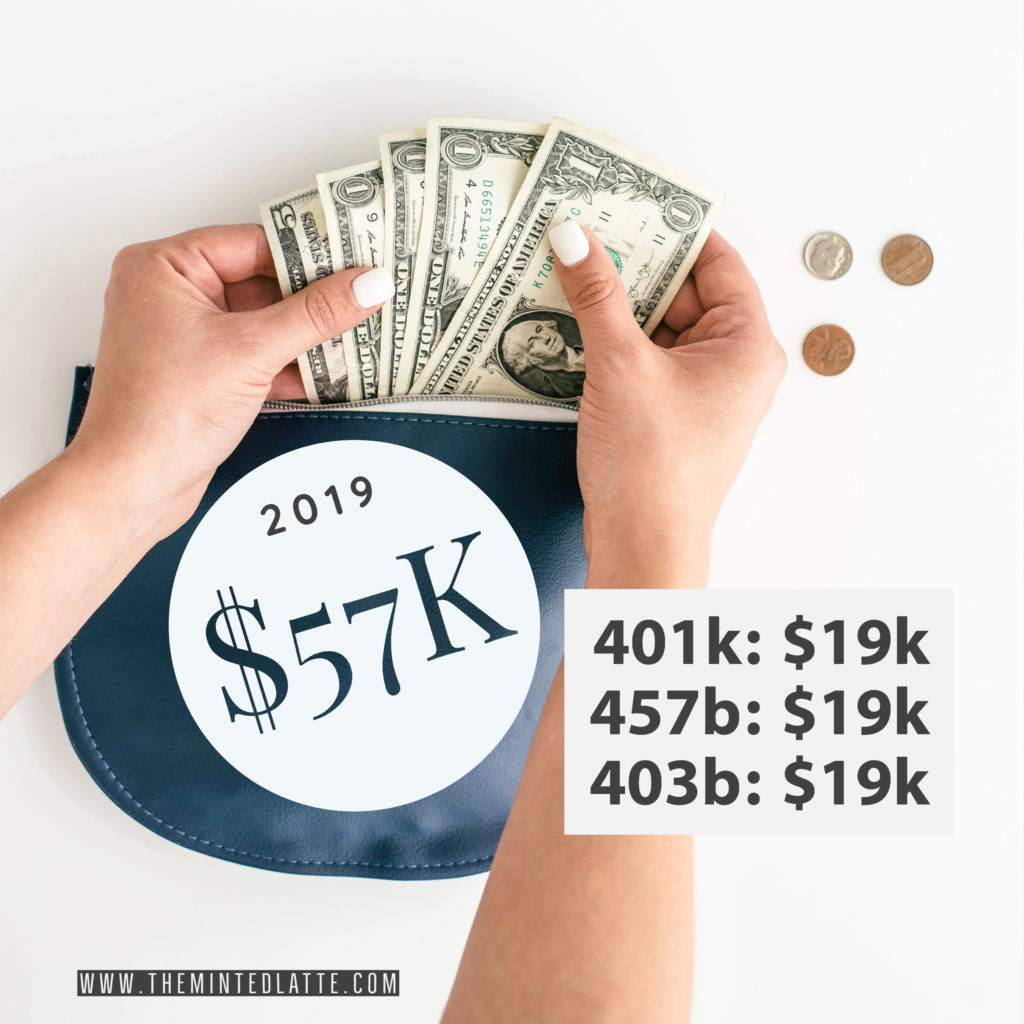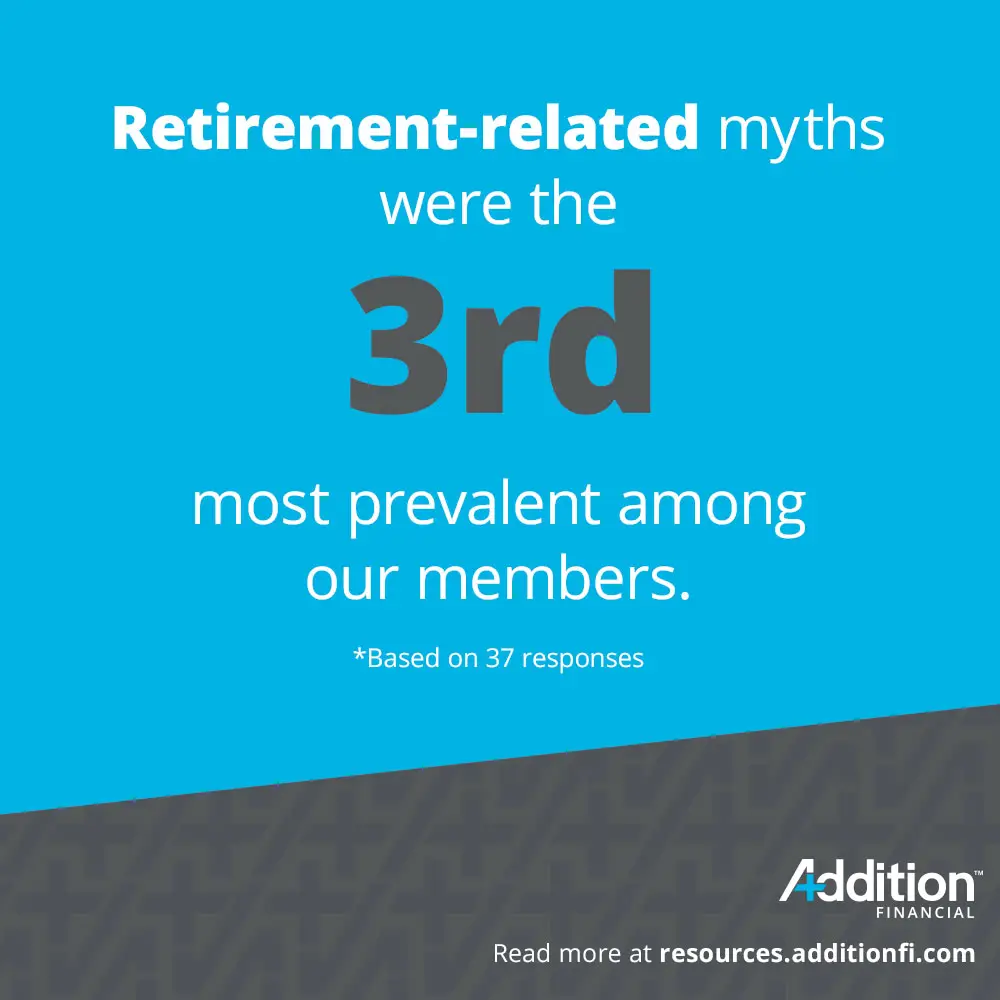Types Of Employee Contributions
- Salary reduction/elective deferralcontributions are pre-tax employee contributions that are a generally a percentage of the employee’s compensation. Some plans permit the employee to contribute a specific dollar amount each pay period. 401, 403 or SIMPLE IRA plans may permit elective deferral contributions.
- Designated Roth contributions are a type of elective contribution that, unlike pre-tax elective contributions, are currently includible in gross income but tax-free when distributed. 401, 403 and governmental 457 plans can allow them. If a plan permits designated Roth contributions, it must also offer pre-tax elective deferral contributions.
- After-tax contributions are contributions from compensation that an employee must include in income on his or her tax return. If a plan allows after-tax contributions, they are not excluded from income and an employee cannot deduct them on his or her tax return.
- Catch-up contributions if permitted by a 401, 403, governmental 457, SARSEP or SIMPLE IRA plan, participants who are age 50 or over at the end of the calendar year can also make catch-up elective deferral contributions beyond the basic limit on elective deferrals.
What To Do If Your Employer Uses Payroll Matching With No True
If you discover that your employer does not provide true-up matches and your desire is to maximize savings up to the annual 401k contribution limit, its time to do a little math.
Consider the example of 52-year old Barry who has an annual income of $400,000 and is eligible to contribute $25,000 to his 401k in 2019. His employer matches each dollar of 401k deferrals up to 4% of salary without a true-up. Barry simply needs to divide the $25,000 contribution limit by his income of $400,000 which results in an answer of 6.25%. He then wants to set his 401k deferral percentage to 6.25% before the first payroll of the year so that he spreads his 401k contributions over all pay periods and still hits his contribution limit of $25,000 by December 31.
What Does Your Plan Say
Although not common, a plan can specifically require that salary deferrals cease once a participants compensation reaches the annual limit.
If your plan specifies that salary deferrals be based on a participants first $280,000 of compensation, then you must stop allowing Mary to make salary deferrals when her year-to-date compensation reaches $280,000, even though she hasnt reached the annual $19,000 limit on salary deferrals, and must base the employer match on her actual deferrals.
You May Like: Can I Combine 401k Accounts
How Does The Employer Match Work
Employer 401 match programs usually incorporate two figures when calculating a total possible match contribution: a percentage of the employees own contribution and a percentage of the employees salary. Employers might match 25%, 50%, or even 100% of an employees contribution up to a set percentage of the employees salary.
Some companies may match contributions dollar for dollar, while others match at a smaller percentage. Other employers may set a hard dollar-based cap instead of limiting match contributions to a percentage of the employees total salary. Total employer contributions cannot exceed 25% of eligible employees annual salary or compensation.
No matter what your companys match program is, its important to strategize. Retirement experts regularly encourage employees to contribute enough to reach the maximum possible employer contribution, or at least as much as they can comfortably contribute. This ensures employees arent leaving money on the table, especially since its part of their total compensation.
Why Should You Offer A 401 Employer Match

Offering a 401 employer match as part of your small business 401 plan has three primary benefits for your company:
- Better recruiting: Not all companies offer a 401 employer match, so doing so can help your business stand out to top job candidates. Providing better benefits correlates with hiring better employees.
- Stronger employee morale and retention: Just as offering 401 contribution matching can draw better recruits to your business, this benefit can also improve morale among existing team members and increase employee retention at your company.
- Employer tax benefits: There are tax savings that businesses can take advantage of by offering 401 employer matching. Tax laws allow employers to claim their matching contributions as tax deductions.
Tip: Retirement savings plans are often considered a key part of a great employee benefits package. Whether they are a taxable fringe benefit depends on whether the plan is tax-deferred.
Also Check: Can I Take Monthly Distributions From My 401k
What Rrsp Prpp Or Sppcontributions Can You Deduct On Your Tax Return
You can claim a deduction for:
- contributions you made to your RRSP, PRPP or SPP
- contributions you made to your spouses or common-law partners RRSP or SPP
- your unused RRSP, PRPP or SPP contributions from a previous year
You cannot claim a deduction for:
- amounts you pay for administration services for an RRSP
- brokerage fees charged to buy and sell within a trusteed RRSP
- the interest you paid on money you borrowed to contribute to an RRSP, PRPP, or SPP
- any capital losses within your RRSP
- employer contributions to your PRPP
Smart Money: Retirement Changes You May Have Missed
- NerdWallet | special to cleveland.com
The investing information provided on this page is for educational purposes only. NerdWallet does not offer advisory or brokerage services, nor does it recommend or advise investors to buy or sell particular stocks, securities or other investments.
Welcome to NerdWallets Smart Money podcast, where we answer your real-world money questions.
In this weeks episode, we discuss the newest changes to retirement benefits and what it means for you.
Check out this episode on any of these platforms:
Our take
Congress passed a $1.7 trillion bill to avoid a government shutdown right before the holidays that included some key changes to retirement benefits that will be felt for years to come.
The provision, called Secure 2.0, will mostly affect Americans who have a retirement account through their employer. And the bulk of the changes will impact older Americans who are already financially secure. Here are some of the highlights of Secure 2.0 that will roll out over the next few years:
In 2023, there are additional savings account changes coming, including maximum annual contributions and health savings accounts limits. Retirees are also set to receive long-awaited boosts in the form of a higher cost-of-living adjustment for Social Security, as well as cheaper premiums and deductibles for Medicare Part B.
Have a money question? Text or call us at 901-730-6373. Or you can email us at . To hear previous episodes, go to the podcast homepage.
Don’t Miss: What Is The Difference Between 401k And 403b
Safe Harbor 401 Plans
A safe harbor 401 plan is similar to a traditional 401 plan, but, among other things, it must provide for employer contributions that are fully vested when made. These contributions may be employer matching contributions, limited to employees who defer, or employer contributions made on behalf of all eligible employees, regardless of whether they make elective deferrals. The safe harbor 401 plan is not subject to the complex annual nondiscrimination tests that apply to traditional 401 plans.
Safe harbor 401 plans that do not provide any additional contributions in a year are exempted from the top-heavy rules of section 416 of the Internal Revenue Code.
Employers sponsoring safe harbor 401 plans must satisfy certain notice requirements. The notice requirements are satisfied if each eligible employee for the plan year is given written notice of the employee’s rights and obligations under the plan and the notice satisfies the content and timing requirements.
In order to satisfy the content requirement, the notice must describe the safe harbor method in use, how eligible employees make elections, any other plans involved, etc. Income Tax Regulations section 1.401-3 , contains information on satisfying the content requirement using electronic media and referencing the plan’s Summary Plan Description.
Both the traditional and safe harbor plans are for employers of any size and can be combined with other retirement plans.
Knowing These Rules Can Save You A Lot Of Trouble With The Irs
A 401 is a tax-advantaged retirement account, so the government sets limits on how much you can contribute every year. But it also understands that inflation makes retirement more expensive over time, so it reevaluates its limits every year and sometimes raises them. Here’s an overview of all of the contribution limits the government imposes on 401s in 2020 and 2021.
Read Also: How Much Money Will I Have In My 401k
Match Limits: What Payroll Administrators Need To Know
Its a new year, and that means its time for payroll administrators to get up to date on the latest changes to 401 match limits. Much remains the same, but theres a few key updates youll need to take notice of.
In 2023, your employees contribution limits for their 401 will increase to $22,500, up from $20,500 for 2022. And the total annual contribution amount will increase to $66,000 from $61,000 in 2022. Most companies typically offer 3-6% in matching funds, but there is no limit to the amount an employer can contribute as long as the annual cap isnt reached.
Does Employer 401k Match Count Towards The Annual Limit
Do you want to take advantage of a max contribution to a 401k? Do you know if your employers 401k match counts towards the maximum limit? The answer is yes, but does it count as a contribution from the individual, or does it count as an employer contribution? These two factors can make a huge difference.
Recommended Reading: What Kind Of 401k Do I Have
Are There Income Limits For 401s
While theres not a universal income limit on 401 contributions, in some cases the IRS does impose contribution limits on highly compensated employees when a company encounters disproportionate contribution levels among its workers. The IRS has a test that helps employers who sponsor 401 plans assess whether employees are participating in their plan at levels proportionate to their compensation.
If the test determines that people across compensation levels arent participating in a manner the IRS deems proportionate, employee contribution levels for highly compensated employees can be lowered. In these cases, your employer may need to return some of your excess contributions.
The IRS defines a highly compensated employee in one of two ways:
An individual who either owned more than 5% of the interest in a business at any time during the year or the preceding year, no matter how much they were paid.
An individual who received over $130,000 from the business in the preceding year and, if the employer ranks employees by compensation, was in the top 20%.
Why Do 401 Limits Change Some Years And Remain Unchanged In Others

The 401 contribution limits are adjusted annually in accordance with changes in inflation. The effects of inflation are measured by the consumer price index for urban wage earners and clerical workers. If inflation increases significantly, 401 matching limits are increased by increments of $500 or $1,000. However, if the increase in inflation isnt significant enough, the limits remain unchanged.
You May Like: How Do I Find Out What My 401k Balance Is
What Is Considered A Good 401 Matching Contribution
Many employers and employees consider a good 401 match to be an employer contribution of 50 cents for each dollar an employee contributes for up to 6% of the employees pay, which is why this is the most common 401 matching contribution. This is typically considered a generous matching contribution since the average matching contribution is 4.3% of an employees salary.
What Happens If You Contribute Too Much To Your 401
If your 401 contributions exceed the limits above, you may end up being taxed twice on your excess contributions: once as part of your taxable income for the year that you contribute and a second time when you withdraw from your plan. Earnings still grow tax-deferred until you withdraw them.
If you realize you contributed too much to your 401, notify your HR department or payroll department and plan administrator right away. During a normal year, you have until your tax filing deadlineusually April 15to fix the problem and get the money paid back to you.
Excess deferrals to a 401 plan will have to be withdrawn and returned to you. Your human resources or payroll department will have to adjust your W-2 to include the excess deferrals as part of your taxable income. If the excess deferrals had any earnings, you will receive another tax form that you must file the following tax year.
Access to thousands of financial advisors.
Expertise ranging from retirement to estate planning.
Match with a pre-screened financial advisor that is right for you.
Answer 20 questions and get matched today.
Connect with your match for a free, no-obligation call.
Read Also: How Much Can I Invest In My 401k
How Do 401 Matches Work
Every 401 plan is different, so youll have to check your employers plan for the details on exactly how yours works. But there are two common types of matches:
Partial matching
Your employer will match part of the money you put in, up to a certain amount. The most common partial match provided by employers is 50% of what you put in, up to 6% of your salary. In other words, your employer matches half of whatever you contribute but no more than 3% of your salary total. To get the maximum amount of match, you have to put in 6%. If you put in more, say 8%, they still only put in 3%, because thats their max.
Heads-up that you might see this written in a lot of different ways. 50 cents on the dollar up to 6%, 50% on the first 6%, 3% on 6% you get the picture. All various ways to describe a partial match.
Dollar-for-dollar matching
With a dollar-for-dollar match , your employer puts in the same amount of money you do again up to a certain amount. An example might be dollar-for-dollar up to 4% of your salary. In this case, if you put in 4%, they put in 4% if you put in 2%, they put in 2%. If you put in 6%, they still only put in 4%, because thats their max.
Two Annual Limits Apply To Contributions:
Don’t Miss: How To Invest In A 401k Plan
Contribute To Solo 401k And Day
Your wifes ability to contribute to a solo 401 depends on the self employment income that she receives from the partnership. Specifically, in order to determine how much she could contribute to the solo 401 she would take the amount reported on line 14 of her K-1 and reduce it by one half of the self-employment tax. Of that number, she could contribute for 2017: up to $24,000 as an employee contribution plan sponsored by her daytime employer) and a profit-sharing contribution to the solo 401 equal to 20% of that same number provided that her overall contribution to the solo 401 cannot exceed $60,000.
Traditional 401 Vs Roth 401
A Roth 401 is an employer-sponsored investment account thats similar to a traditional 401 plan, except the contributions to the account are taxed up front rather than at the time of withdrawal. It is well suited to people who expect to be in a high tax bracket when they retire and thus want to avoid paying taxes on their investment returns.
A traditional 401 is also an employer-sponsored retirement savings and investment account. Employers and employees both make contributions to a 401 on an elective basis. Employers may choose to match an employees contributions, up to a certain point. The money is then invested in various securities and mutual funds to grow until it is withdrawn after retirement.
Traditional 401 contributions are made with pretax dollars. This means that more money goes in right at the start, giving you a bigger amount to invest. The contributions are also tax-deductible at the time they are made, so they might move you to a lower tax bracket. That is something to consider, especially if you are on the cusp. When the funds are withdrawn, however, you pay taxes on both your initial investment and your investment returns that have accumulated over the years.
Don’t Miss: What Happens To Your 401k When You Retire
Should You Max Out Employer Matching
If your employer offers a match, you should definitely strive to contribute enough to take advantage of the full match. If you dont, youre leaving free money on the table, says ODonnell. It adds up over time.
Even if you dont want to max out your 401, getting the full employer match helps you save the most and take advantage of all the benefits available to you through your employer. Its therefore a good idea to at least contribute enough to get whatever your company is willing to match.
Its important to start small and start now because you can always increase the amount you save each year. Even a 1% increase will add up, especially if your company matches those contributions. That puts the power of compounding to work for you, adds Winston.
Your 2022 Guide To Employer Match And 401 Contribution Limits

Offering a matching 401 plan to your team is a great way to attract high-quality employees to your company. An employer-matched 401 can also help reduce employee churn as individuals recognize the financial significance of this benefit.
Many companies now opt for a 401 employer match program, rather than the traditional pension plan. Employer-matched 401 contributions allow for tax deductions for the employer. For this reason, there are 401 matching limits for how much employers can contribute to their employees 401 savings plans.
Learn more about what a 401 plan is, how employer matching works and the max 401 contribution company match limits over the past few years, including 2022 limits.
Recommended Reading: How To Find 401k Money
